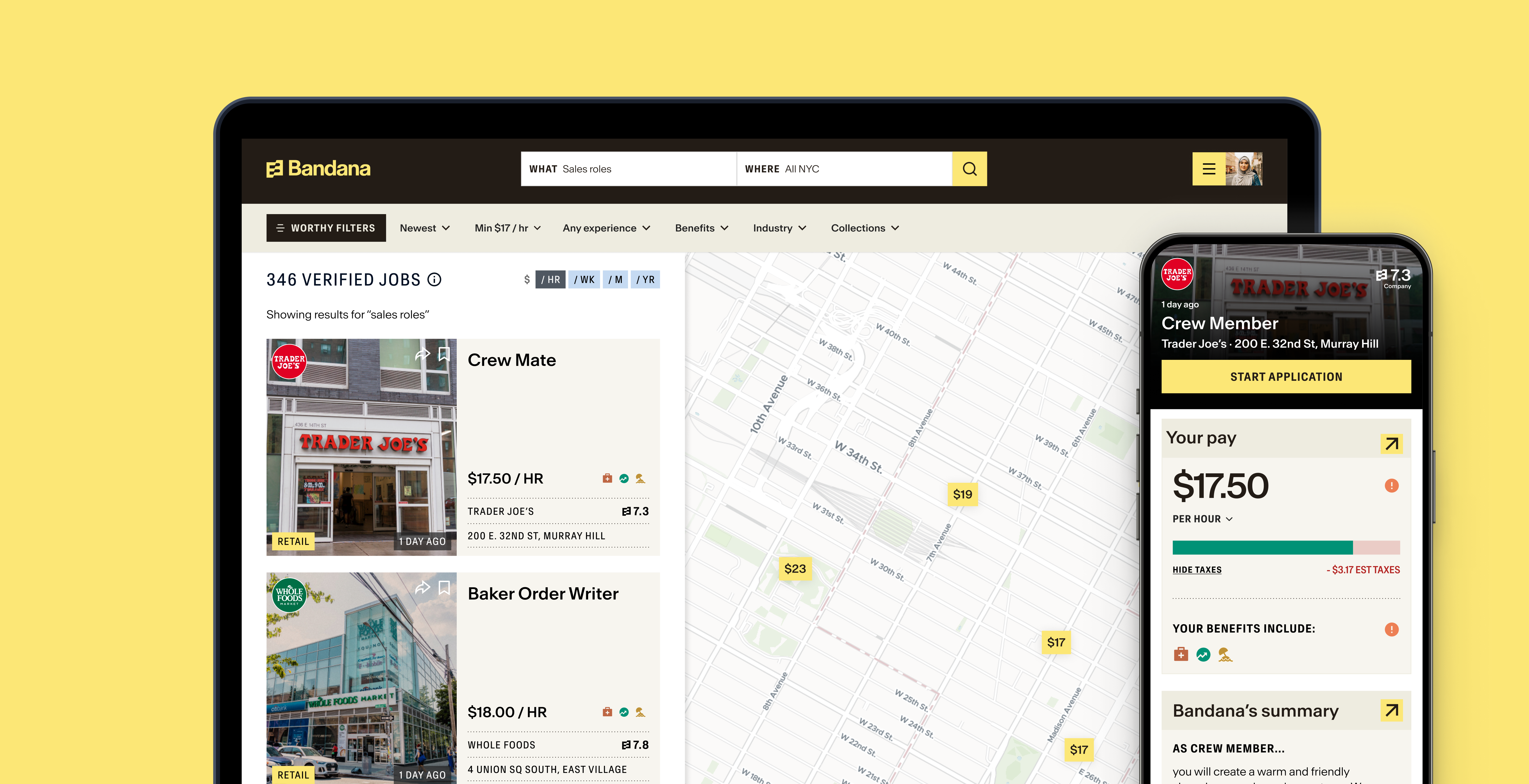Bandana’s co-founder and CEO Timothy Makalinao grew up in a working class household and saw firsthand how hard it can be for hourly wage employees to find decent work and support a family. When he launched his company last year with two friends he met at college a decade ago — COO Caleb Lee and CTO Larry Zhang — he decided to build a solution aimed specifically at this group of job seekers.
The trio is building a platform to help these workers find jobs that pay above minimum wage, offer benefits like health insurance and paid time off, and provide a location as part of the job posting to enable people to find work reasonably close to where they live, all things Makalinao’s parents struggled to find when they came to America. Today, the company announced a $3.8 million seed investment to bring the idea to life.
“Essentially what we’re trying to do is to create a platform that rejuvenates the working class of America by making it really easy for them to find better jobs, and then in the long term, better livelihoods,” Makalinao told TechCrunch.
That takes the form of a two-sided marketplace with job seekers on one side and employers on the other. For starters, they are concentrating on jobs in the New York City area. While the idea may be altruistic, and takes aim at a group of people who are typically left out of the startup ecosystem, Makalinao, whose professional background includes time as a McKinsey analyst and VP of strategy at hedge fund Citadel, makes it clear that they are building a business.
“The way we think about this is as mission-driven as we can be, in order to make something big, the business idea has to be economically sound,” he said. In an early beta test of the website, 30,000 people found the initial version without advertising or marketing, and he believes this could help separate him from competitors like Indeed that spends millions of dollars on advertising to attract job seekers to the platform, and look more broadly across the job market.
“So that’s kind of our thesis, that we can attract workers without having to pay for worker acquisition, and we can prove to businesses that this is where all the workers are, and you’re going to find the best workers here because we treat them like people instead of commodities,” he said.

Image Credits: Bandana
The company plans to use the seed capital to keep the site free for about a year in order to attract users from both sides of the marketplace to the platform. They are also connecting to major employer’s job posting websites, and pulling their postings into the platform automatically, to ensure they are seeding the site with a good supply of jobs.
In the future, the plan is to charge employers for job postings in exchange for access to this pool of workers. Eventually, they want to expand to other geographies, and also add other features like certifications that would enable workers to get better paying jobs with room for career growth. They also are thinking about fintech pieces to help workers with savings and understanding money management better.
For now, the team is lean with just six employees, including the three founders, but they have a few open jobs. With such a mission-driven type of organization, they are looking for people who believe in the ideals of what they are trying to achieve, while reflecting the community at large who will be using the platform.
“We’ve been very [deliberate] about where we hire and who we hire because it has such a big effect and how we present ourselves to the world,” he said.
Today’s investment was led by General Catalyst and Craft Ventures, with participation from Triple Impact Capital, Sarah Smith Fund and several unnamed angel investors. Makalinao says they have been in a soft launch beta for several months, but are launching an updated, rebranded website on September 25 to continue testing the idea.
